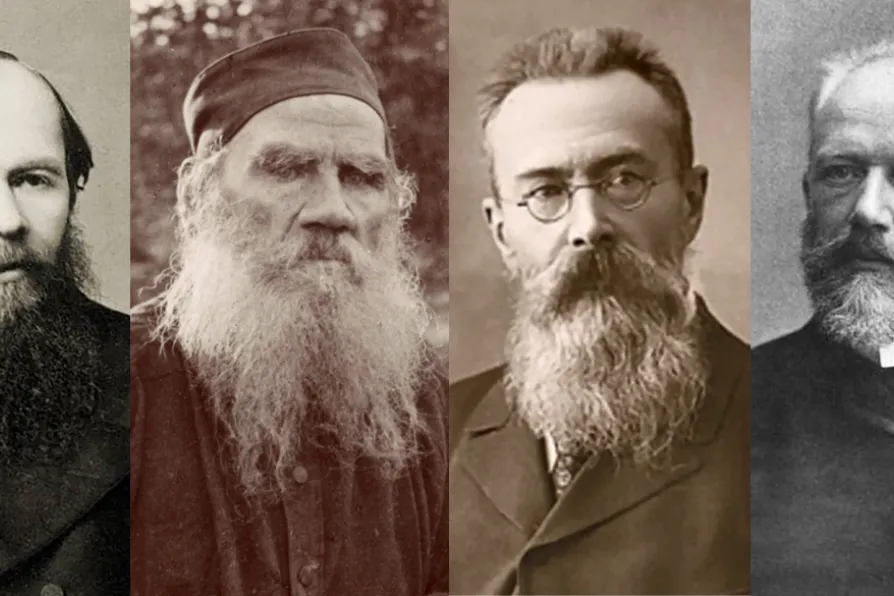ANDY HEDGECOCK picks out his cultural highlights of 2025

 PUTIN'S MEN? (L to R) Fyodor Dostoyevsky, Leo Tolstoy, Nikolai Rimsky-Korsakov, Pyotr Ilyich Tchaikovsky
[(L to R) Nikolai Fedorovich/FW Taylor/Serge Lachinov/Emile Reutlinger/Creative Commons]
PUTIN'S MEN? (L to R) Fyodor Dostoyevsky, Leo Tolstoy, Nikolai Rimsky-Korsakov, Pyotr Ilyich Tchaikovsky
[(L to R) Nikolai Fedorovich/FW Taylor/Serge Lachinov/Emile Reutlinger/Creative Commons]
THE escalation of violence in Ukraine, following the eight years of instability, has been harrowing to observe. The devastating loss of life, the desecration of historical sites and increasing horrors, which for two nations whose history is so deeply intertwined makes the conflict all the more difficult to stomach.
Though many dismiss art and culture as a frivolous endeavour, its importance becomes all the more vital during such dark days. It can be a vessel to challenge the warmongers, it can depict the inhumanity of war, it can share tales of heroism, and most importantly humanise those we are told are the “enemy.”
For these reasons, the current weaponisation of many facets of our life show the massive ideological and humanitarian battles that we need to fight throughout Europe and the West in general.

Washington plays innocent bystander while pouring weapons and intelligence into Ukraine, just as it enables the Gaza genocide — but every US escalation leaves Ukraine weaker than the neutrality deal rejected in 2022, argue MEDEA BENJAMIN and NICOLAS JS DAVIES

ED RAMPELL is disappointed by the confusing results of embedding cameras amid a Ukranian platoon

MARIA DUARTE recommends the very human portrayal of Anna Politkovskaya, a journalist in Putin’s Russia

BEN LUNN alerts us to the creeping return of philanthropy and private patronage, and suggests alternative paths to explore










